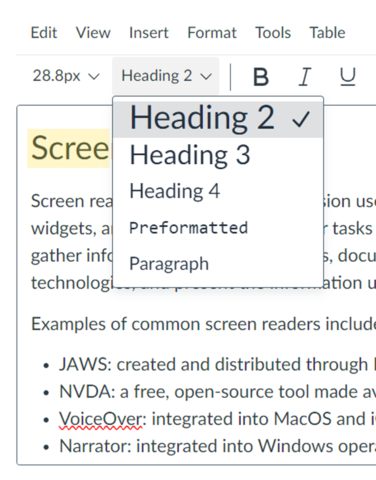
Organizing your document with headings is a simple way to improve the accessibility of your Word, web, PDF, and other document formats. Headings make your documents easier to scan visually or with assistive technology. A sound heading structure also makes it easier for you to provide additional supports like bookmarks or a table of contents.
Page title and language, landmarks and sectioning, semantic objects, and metainformation are other elements that can help people better understand how to read and navigate your document.
Tips for providing good structure
- If your document supports metadata, provide title, language, summary and other descriptive information
- Use a first-level heading to provide a meaningful visual title for each document; this should match the title in your metadata, if any
- Separate your document into sections, regions, or landmarks where appropriate
- Use level 2 headings to introduce new topics or sections in your document
- Do not skip heading levels
- Use headings to provide a table of contents, bookmarks, sitemap, or other navigational supports for your end user
- Do not use headings for blocks of body text or for stylistic purposes
- Do not use tabs to simulate columns, tables, lists, or other structures
View OCR Video Series Topic 17: Heading Structure (Open Captioned Video, 3:11)